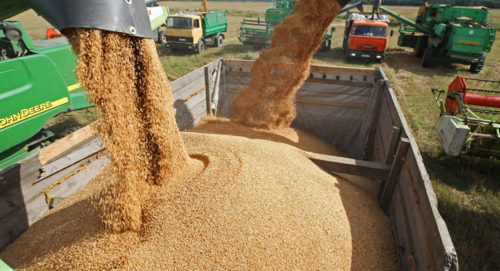Wheat farmers in Nigeria are planting new varieties more suited to the tropics to boost local production and help cut imports costing more than $4 billion a year, a farmers group said.
Two new strains of the grain identified as Reyna-28 and Norman Borlaug, developed by the Lake Chad Research Institute, a government-owned agricultural research agency, yields more than 3 metric tons per hectare (2.5 acres), compared with 1 ton per hectare harvested from the older types, according to Salim Mohammed, president of the Wheat Farmers Association of Nigeria. South Africa, a major wheat producer in sub-Saharan Africa, estimates average yield for the 2018 production season at 3.6 tons per hectare.
“We have cultivated over 300,000 hectares and we hope that soon we can produce more than one million tons a year,” said Mohammed.
Nigeria’s wheat production stood at 60,000 tons at the end of the 2016-17 season, according to data from the U.S. Department of Agriculture. The U.S. is the biggest exporter of wheat to Nigeria, with 3.3 million tons arriving in 2017, followed by Russia with 1.7 million tons, according to Nigeria’s agriculture ministry.
Though wheat grows mainly in irrigated farms in northern Nigeria’s cool, dry season from November to April, the new varieties also thrive in the wet season, farmers said.
Most of the wheat is milled into flour for bakeries or used to produce pasta and other wheat-based foods. Flour Mills Nigeria Plc, the country’s biggest miller, has provided research grants to support the development of improved wheat strains and has also been a major buyer from farmers, according to Zakari Turaki, director of research at the Lake Chad Research Institute.
Nigeria spent $4.4 billion on wheat imports last year and plans to cut shipments 60 percent by 2025, according to the agriculture ministry.
Source: Bloomberg
